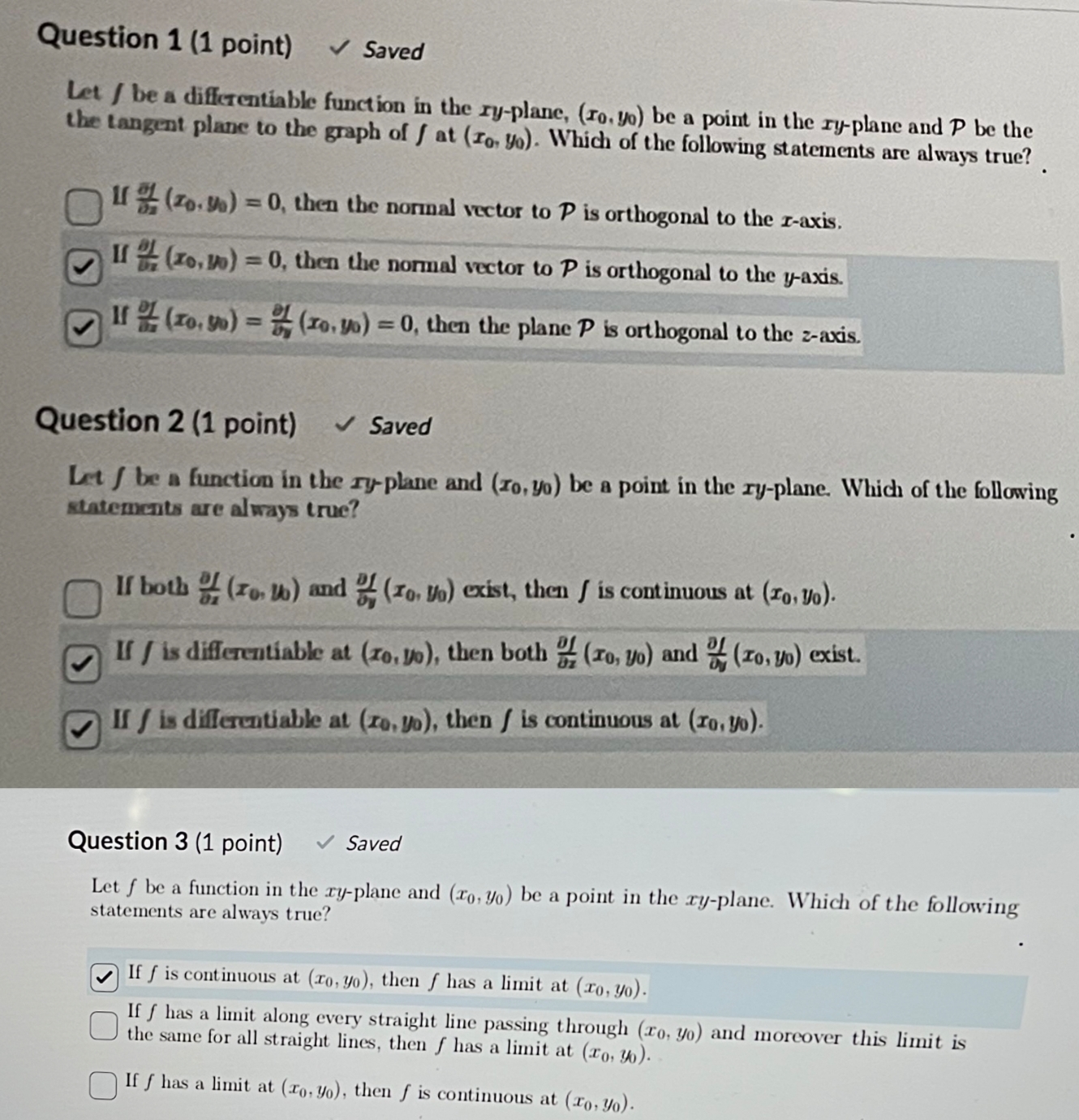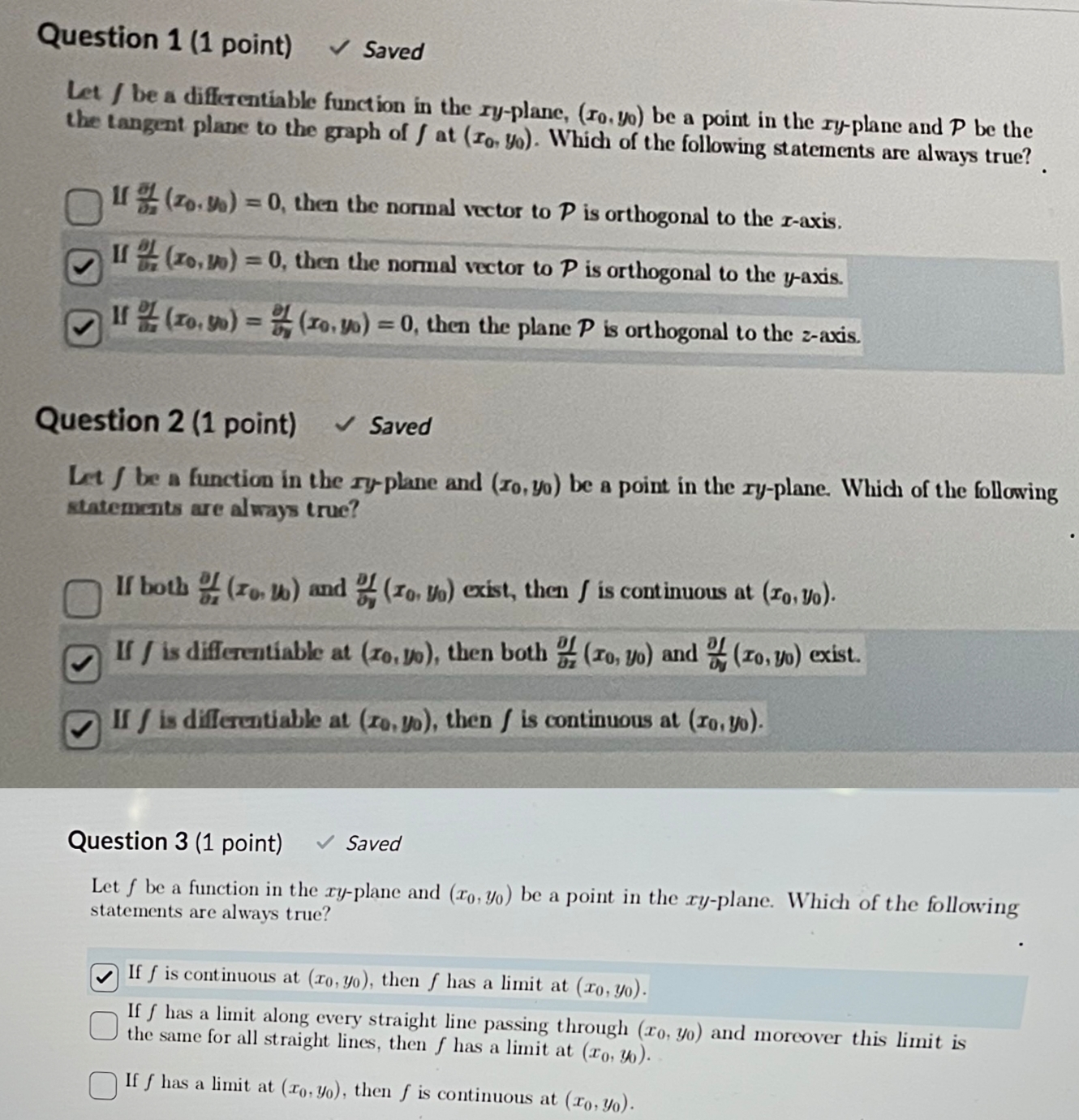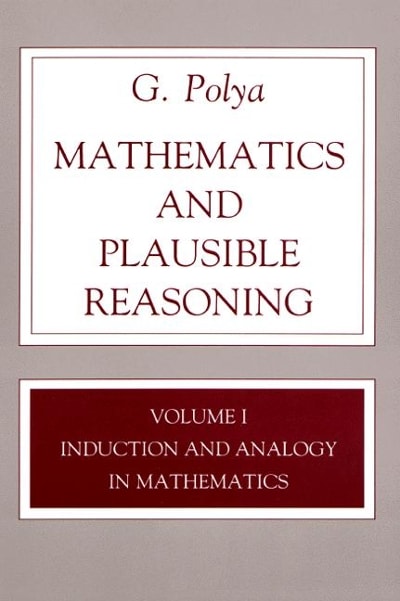Question
Question 1. Let f be a differentiable function in the xy-plane, (x0, y0) be a point in the xy-plane and P be the tangent plane

Question 1. Let f be a differentiable function in the xy-plane, (x0, y0) be a point in the xy-plane and P be the tangent plane to the graph of f at (x0, y0). Which of the following statements are always true?Question 2. Let f be a differentiable function in the xy-plane, (x0, y0) be a point in the xy-plane. Which of the following statements are always true?Question 3. Let f be a differentiable function in the xy-plane, (x0, y0) be a point in the xy-plane. Which of the following statements are always true?The selected answers are just my attempts. They are not the correct answers. Each question can have more than one correct answer.

Step by Step Solution
There are 3 Steps involved in it
Step: 1

Get Instant Access to Expert-Tailored Solutions
See step-by-step solutions with expert insights and AI powered tools for academic success
Step: 2

Step: 3

Ace Your Homework with AI
Get the answers you need in no time with our AI-driven, step-by-step assistance
Get Started


